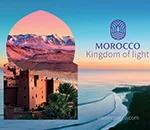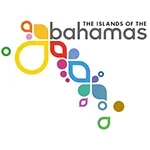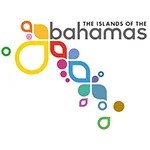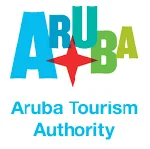 |
| Dave Nobs |
Perhaps no other industry was more adversely affected by COVID-19 than the travel and tourism sector. And yet, arguably no industry is more important to the nation’s recovery.
According to Roger Dow, president and CEO of the U.S. Travel Association, there’s no better time to acknowledge the outsized role travel will play in fueling an economic rebound.
“Before the pandemic, travel generated $2.6 trillion in economic output, supported 17 million American jobs and delivered a $51 billion trade surplus to the U.S. in 2019. Given the industry’s importance to America’s economy and workforce, a full, nationwide recovery effectively hinges on travel’s revival,” Dow said. “While we are beginning to see signs of a recovery on the horizon, much work remains ahead to ensure its growth.”
“Brands need to be prepared for this travel resurgence—they need to have plans ready to drive the demand,” said Clayton Reid, CEO of MMGY Global, in a recent Ad Age interview with Adrianne Pasquarelli. “It will be an increasingly competitive environment where [marketers] will be scrambling to not only bring back their current customers but to steal market share.”
| This article is featured in O'Dwyer's July '21 Travel & Tourism PR Magazine (view PDF version) |
Start with strategy
As the old saying goes, failing to plan means planning to fail. As the hospitality industry emerges from a devasting loss of business resulting from the pandemic, putting a strategic marketing plan in place is more important now than ever before.
Typically, this process starts with primary, secondary, industry and competitive research. One of the biggest mistakes we’ve seen is companies that don’t have a marketing plan in place and no thought given to ways in which to measure success.
Understanding who your customer is and what she or he wants is critical. Get to know them better. Who are your best customers? What makes them tick? What do they enjoy? What type of experiences are they seeking? And who else would likely stay at your hotel in the future?
In doing our own research, we found that proximity matters but there’s much more that goes into deciding where to stay while traveling. According to Lavidge’s Hospitality Marketing Report, respondents ranked these words in order of preference in determining where to stay: affordable (66 percent), clean (58 percent), comfortable (54 percent), quality (47percent) and safe (46 percent).
Safety is increasingly significant to a growing segment of travelers. “This is the most important issue for me as I travel alone at times or with my children,” one respondent explained. “Safety in our world is most important. If a resort or hotel cares about safety, then everything else should also be important to their establishment as well.”
The rise of digital
There’s arguably no brand more synonymous with hospitality than Hilton. It was the first hotel chain to put TVs in rooms and the first to build airport hotels, among other things. If you watched the acclaimed “Man Men” series, you’ll remember both the company and its founder, Conrad Hilton, were portrayed as advertising icons in several episodes.
Recently, Hilton CMO Geraldine Calpin explained how the brand is innovating to meet the expectations of their guests in the digital age to Jason Spero, Google VP of Global Performance Solutions.
“To be first among guests used to be about great amenities. That’s becoming history,” Calpin said. “Customer expectations today are accelerating. Our customers are accustomed to controlling their life from the palm of their hand. We have to be constantly obsessive about how we can use digital and technology to create a better experience for our guests to reduce the friction out of those travel moments.”
According to our research, we’re seeing digital marketing continue to grow. As an example, programmatic media, which is a data-driven approach to ad placement that provides one-to-one communications by leveraging real-time bidding in online auctions to get the best placement for an ad at the best price, is increasing. Search engine optimization, email marketing and paid social are also being used more frequently by hospitality brands.
Storytelling through PR
PR is essential for hotels and resorts to tell and share their own stories, which can allow them to survive—and even thrive—as we emerge from these disruptive conditions. Effectively communicating the value of your property to both business and leisure travelers is an essential part of public relations.
Targeted FAM trips that allow media to familiarize themselves with your property, promoting health and wellness options, creating content in the form of videos, infographics, blogs and podcasts, and aligning your property with causes that are important to your guests, in addition to media outreach, thought leadership and crisis preparedness, are all vital to success in planning and implementing a PR campaign.
While our research uncovered several commonalities among travelers who expect a safe, clean and comfortable place to stay at a reasonable price, there’s a need to effectively segment and target your customers rather attempting to reach everyone with a single message.
Standing out in today’s crowded market is tough—but possible—for hospitality brands willing to put in the effort. Creatively, focus on how best to communicate that “one thing” that makes each unique. Start by knowing who you are as a brand and knowing your audience. Then, formulate a marketing strategy and graduate to a formal plan. Finally, keep your marketing and communications engaging and relevant to your guests throughout the campaign.
***
Dave Nobs is Managing Director at Lavidge, a full-service advertising, digital and PR agency in Phoenix, and an adjunct professor at Arizona State University’s Walter Cronkite School of Journalism and Communication.


 Weber Shandwick is providing PR and marketing communications services to the Moroccan National Tourist Office in New York.
Weber Shandwick is providing PR and marketing communications services to the Moroccan National Tourist Office in New York. Finn Partners has filed its six-month contract with the Bahamas Ministry of Tourism, Investments & Aviation, which is worth $240K.
Finn Partners has filed its six-month contract with the Bahamas Ministry of Tourism, Investments & Aviation, which is worth $240K. Weber Shandwick wrapped up its work for the Ministry of Bahamas at the end of 2023.
Weber Shandwick wrapped up its work for the Ministry of Bahamas at the end of 2023. The Aruba Tourism Authority is boosting its budget 29.4 percent to $2.2M at Zeno Group, according to its 2024 contract, effective Jan. 1.
The Aruba Tourism Authority is boosting its budget 29.4 percent to $2.2M at Zeno Group, according to its 2024 contract, effective Jan. 1. As inflation continues to impact spending, consumers are revisiting their list of what they’re willing to spend more of their money on. Luckily for those in the travel industry, experiences seem to be trending up on the “splurge” list.
As inflation continues to impact spending, consumers are revisiting their list of what they’re willing to spend more of their money on. Luckily for those in the travel industry, experiences seem to be trending up on the “splurge” list. 


 Have a comment? Send it to
Have a comment? Send it to 
No comments have been submitted for this story yet.